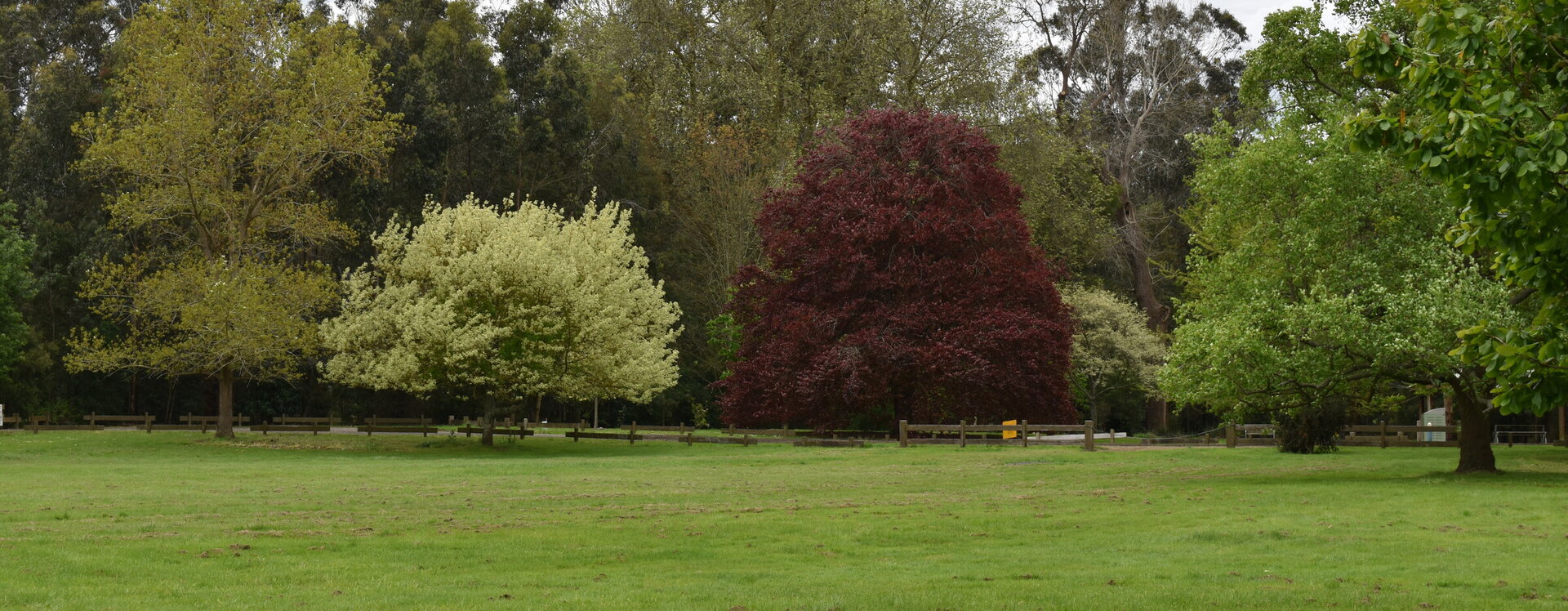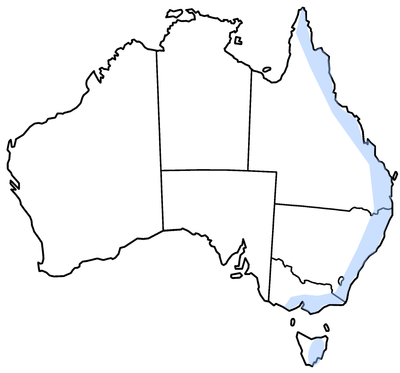
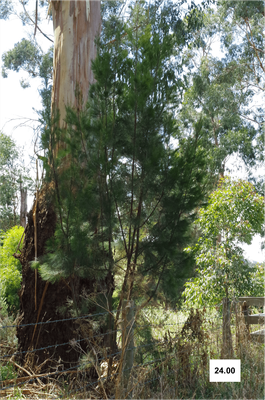
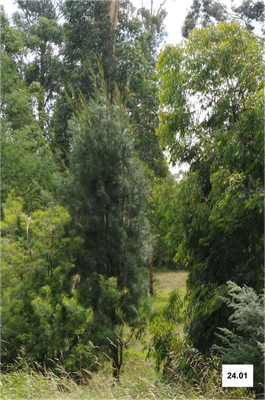
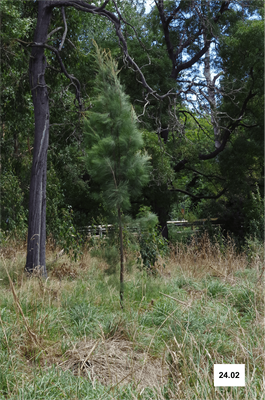


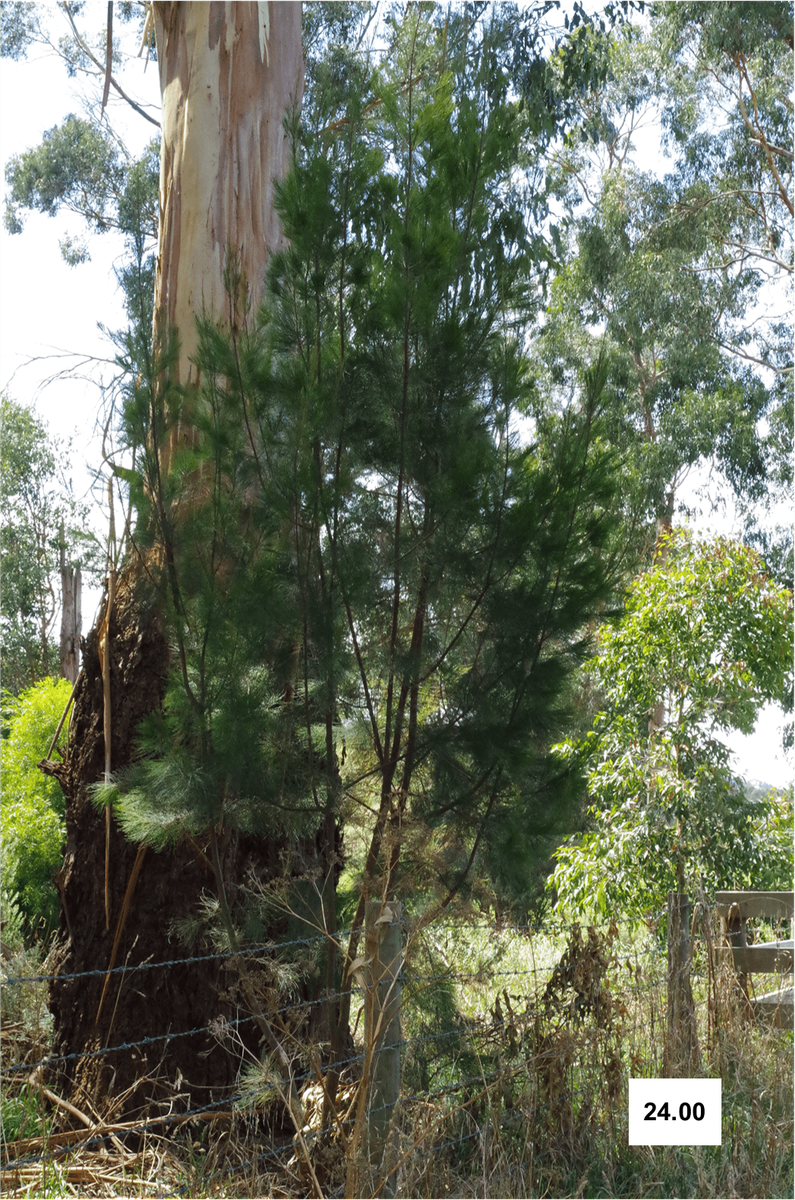
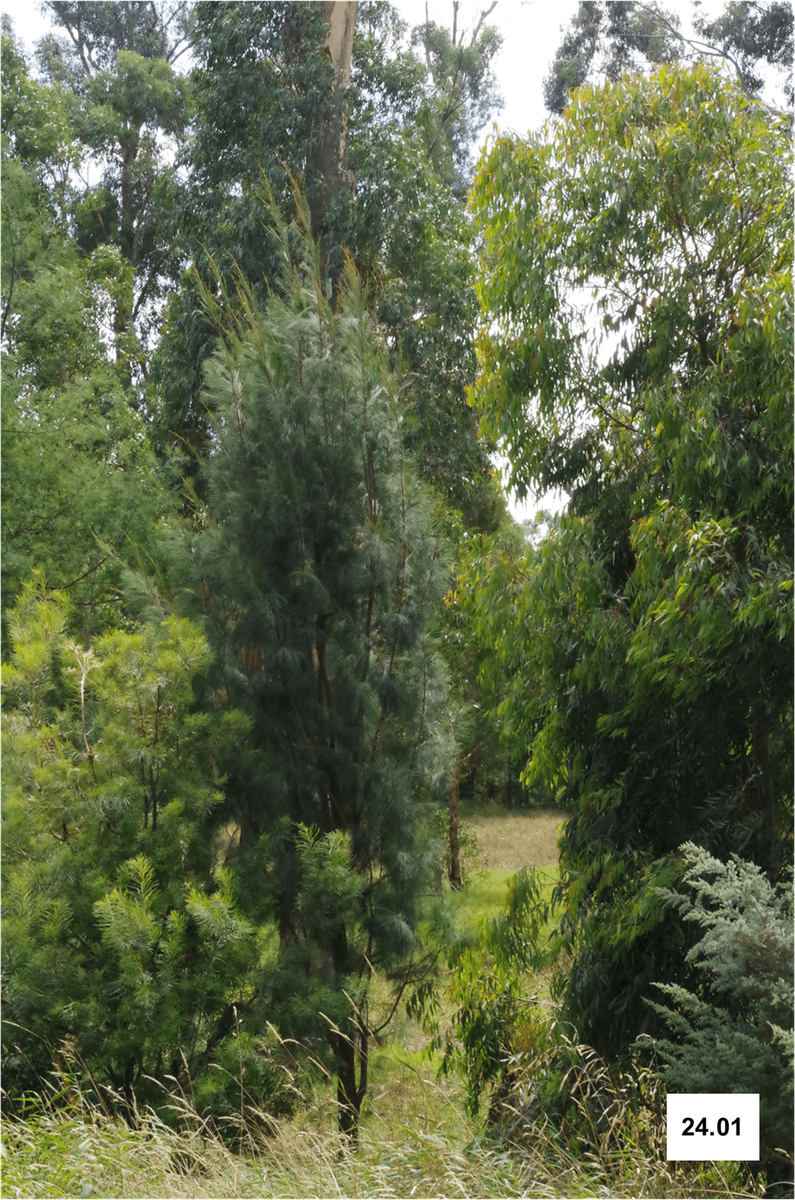
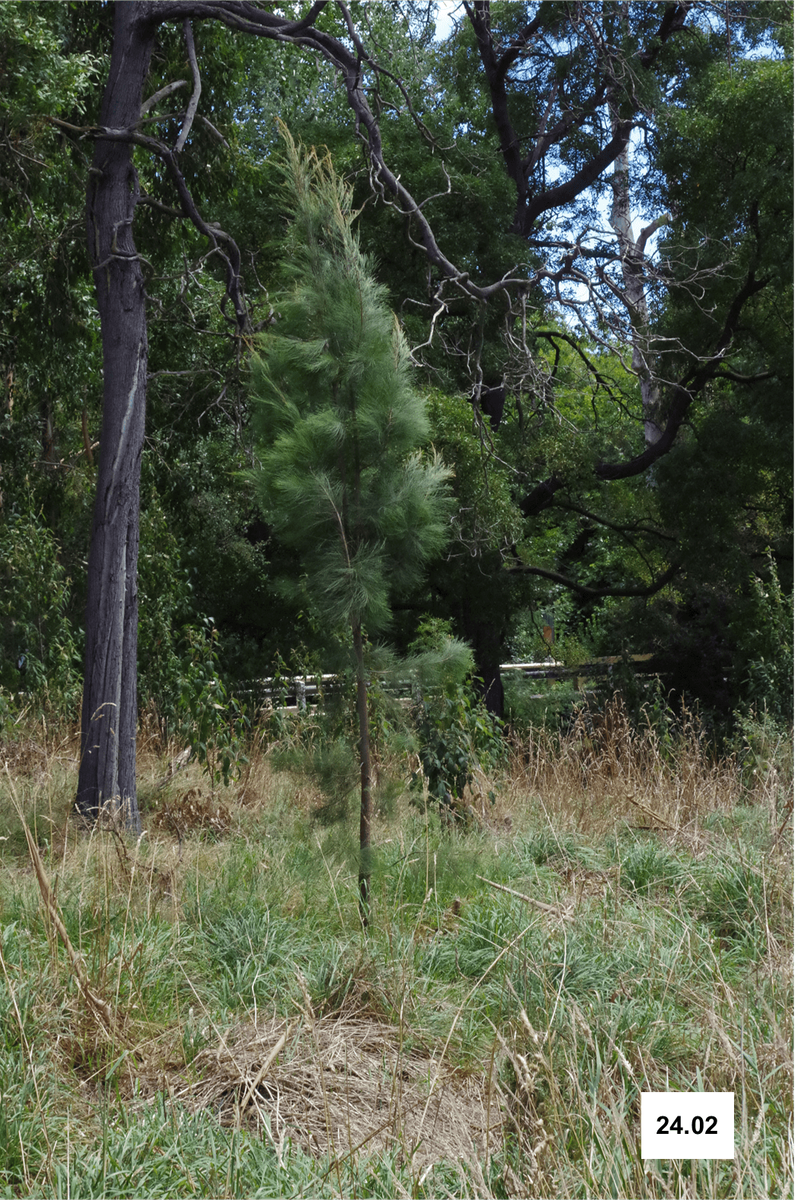

Allocasuarina littoralis
Allocasuarina
Allocasuarina littoralis, commonly known as black she-oak or river black-oak, is an medium-sized Australian tree (usually up to 8 metres, but sometimes to 15 metres - coarse shrub in exposed maritime areas). This evergreen casaurina tree is noted for its modified branchlets - the 'needles' 5–8 cm long and narrow ~ 4 mm, with the true leaves rarely larger than 1mm occurring on the tips of the modified branchlets.
Significance to the Ganai community.
The black she-oak is found in coastal woodlands and scrub and health lands. The timber was used for making shields, boomerangs and other implements. Black she-oak cones are not eaten due to their astringency.
24.00 Location D11 Latitude: -38.4024070000000 Longitude: 146.056271000000
24.01 Location D11 Latitude: -38.4022980000000 Longitude: 146.056140000000
24.02 Location D11 Latitude: -38.4024770000000 Longitude: 146.055982000000
